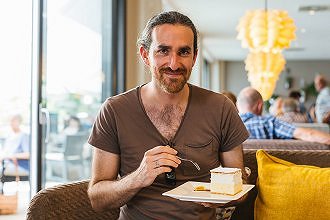Bled with Children
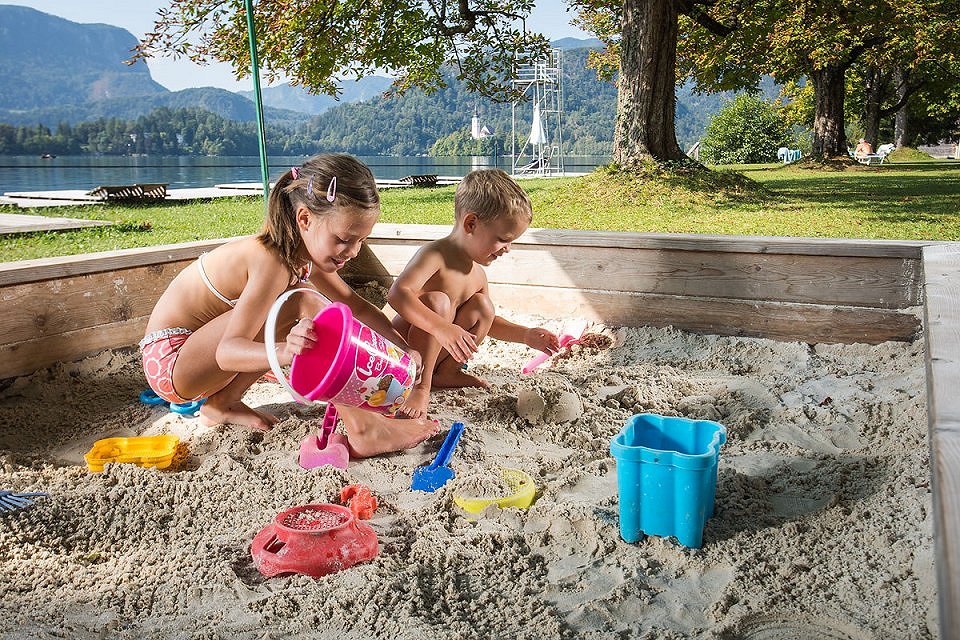
Bled's public lido Grajsko kopališče is one of the most popular summer locations for families living and staying in Bled.
When I think of Bled, my first images are of romance. It’s an ideal, fairytale destination for couples in love and wishing to experience their own storybook romance in one of the most beautiful places on Earth. I’d visited Bled innumerable times, most often with my wife or—less romantically—with a group of relatives, to show them one of the must-see sites of Slovenia. But now I’ve got kids of my own, and so I see potential holidays through a different lens. The goal is to strike a balance between what my wife and I will enjoy, and what will delight our 4- and 6-year-old daughters.
As you can imagine, the two don’t always meet. My wife and I have only so much interest in trampolines, playgrounds, sparkly things and unicorns. Our kids are actually very good in more adult-oriented situations. Being an art historian, I made it a goal to get them enthusiastic about museums, and they are (believe it or not) always asking if we can go to museums. But once we’re inside, though I do my best to engage them in the exhibits, they tend to see the galleries as an elaborate playground, ideal for hide-and-seek, but without much patience for reading wall copy and learning about, say, the glacial geography that formed the Bled lake basin. Fair enough.
So here was my task. What would be best for the whole young family over a weekend in Bled? Turns out the answers came easily, as Bled offers an embarrassment of riches.
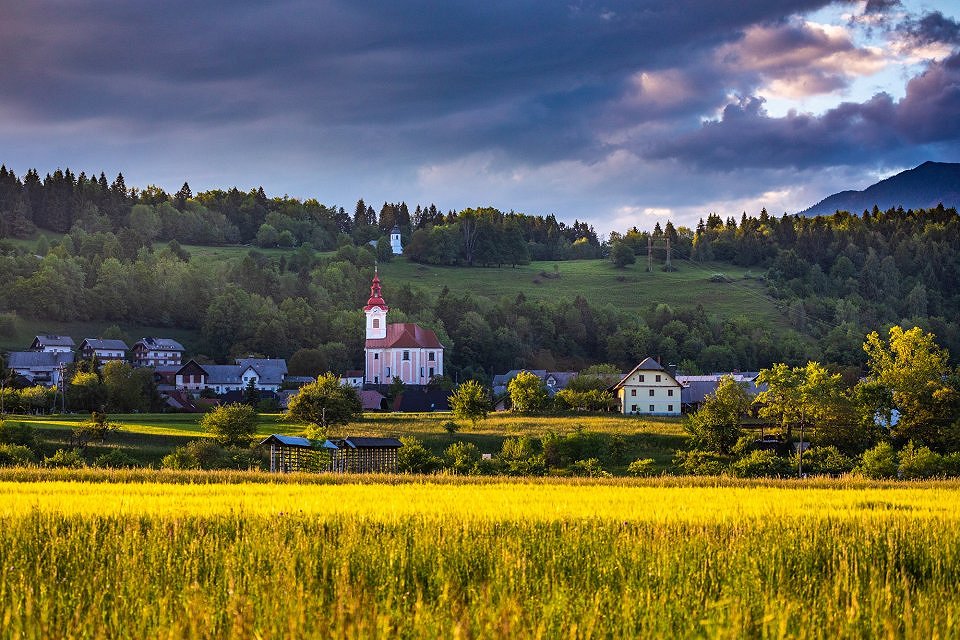 © Jošt Gantar
© Jošt Gantar
Zasip has its own particular cultural heritage—it is the world center for prge, dried tepke variety pears.
We visited during what is probably the busiest weekend in the holiday season, around Bled Days and Nights, when a circuit of festivities—food stands, concerts, special events, and the climax, Bled Night, in which 15,000 candles in egg shells are floated on the lake—makes the tourist center of Bled even more lively than usual. To keep things chilled, we opted to stay just outside the center of Bled, in a lovely village called Zasip, just a five-minute drive away. Zasip has its own particular cultural heritage—it is the world center for prge, dried tepke variety pears and the villagers prepare all manner of foods with them. Most unusual is the use of dried pears in place of wheat flour, for the pears can be ground into a powder and used to make everything from bread to pastry. Zasip has a fine gostilna, country inn, called Kurej, where we tasted as wonderful local specialty, Slovenian struklji (a rolled dough) filled with…you guessed it…pears. This location, away from the action in the Bled center, made for a relaxing getaway to recharge between events.
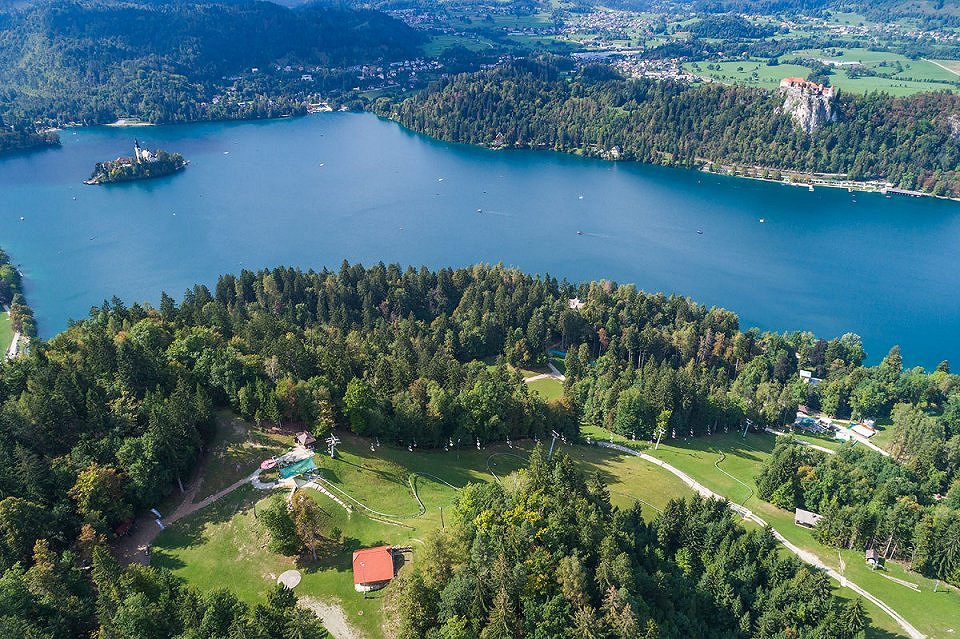
Straža is a smaller hill, suitable for pleasant walks and summer and winter activities.
And the events were plentiful. We spent nearly a whole day on a hill overlooking Lake Bled, rising up from its shore just behind the famous Grand Hotel Toplice. The hill, called Straža is home to a series of family-fun locales. There is a chairlift up to the Adventure Park, where the forest at the top of the hill is kitted out with a series of increasingly difficult obstacle courses high off the ground. My girls and I were suited up with harnesses and helmets, given a thorough and helpful introduction by the staff, and then we were free to explore and test out the various courses, which involved climbing, navigating rope ladders and wobbly bridges, and then shooting along ziplines.
Alas, my 4-year-old was a few centimeters too short to do any but the “baby” obstacle course (kids must be able to reach 140 cm into the air with arms above their heads in order to grab ropes that will help them navigate the obstacle courses), but my wife and 6-year-old had a blast on most of the courses. While waiting with my 4-year-old, we tobogganed down the hill on a special course featuring bright yellow “cars” (big enough to seat two), controlled by a lever (forward for really fast, up to 40 km per hour, back to brake) that loop along a metal track all the way down the hill, with majestic views of the lake and the castle as you go. Once at the bottom of the hill, there was archery for children, a playground, a Slovenian fairytale-themed play area, and two things we didn’t do (but which looked like fun)—a sort of ski jump that you can shoot off of while riding an innertube, and a giant air-filled pillow that you can just onto, freefalling many meters. Adrenaline is my enemy, so this is not my sort of thing, but if you’re a normal person who finds adrenaline enjoyable, then I’m sure you’d like this.
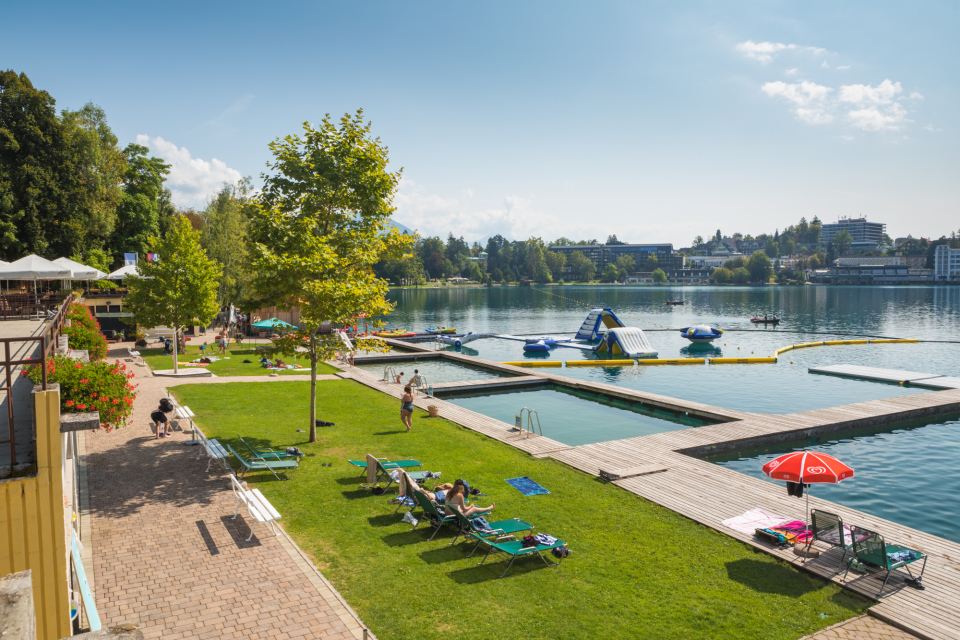
Grajsko kopališče ("Castle Bathing Area") is a public outdoor bathing area situated just below the magnificent castle rock.
That afternoon we made our way to the Grajsko Kopališče Bled, which is the main swimming area on the lake. While in practice people swim at various parts of the lake, this is the official place to do it, and it has a thorough infrastructure, enclosed swimming areas with warmer water, a lifeguard, boat rentals, a water slide and more. The lake was a brisk 23 degrees, which felt just right on a hot summer’s day. Beside it is a stand where a lady serves homemade soft serve ice cream, something I’d never heard of before (I always associated soft serve with industrial production), and it’s just the thing to cool off with. We also wound up skipping lunch in favor of the sweet shop that the locals tend to recommend, Zima, When I first came to Slovenia, it was called Šmon, but it has since been taken over by the Zima family, who have continued the tradition of rich, delicious, and reasonably-priced sweets. Their slice of traditional gibanica cake could feed two, and their version of the famous Bled Cream Cake is more homey, the sort a grandmother might bake, than the sleek original at Park Café (though surely you should try both and do a taste test, to decide for yourself which you prefer).
To get around town, we used our Julian Alps cards. This is a brilliant freebie that all overnight guests receive if they stay at least 3 nights, between June 15 and September 15. It’s very much worthwhile doing so, as there is plenty to do in and around Bled to occupy a slightly longer stay, but there’s added value in the cards, themselves. Particularly during this summer festival, where parking was at a premium, it was a pleasure to travel for free by bus using these cards. The cards even got us a free ride in the chairlift of Straža hill.
My kids find variety in modes of transportation to be great fun, and so with this in mind, traveling by bus, and then by boat was part of the holiday experience. You can rent a boat, or hire a traditional Pletna boat, powered by a gondolier-style oarsman, to take you to Bled Island. There the party begins for children, rushing up the 99 steps from the mooring to the church. Climbing the bell tower, ringing the Wishing Bell, and then of course eating potica in the Poticnici struck all the right chords for children (not to mention the delight in spotting a clan of colossal catfish clustered in the water on one side of the island). Had time allowed, we would also have indulged in a ride around the lake in an old-fashioned horse-drawn carriage fijakerjem which my girls would’ve loved (they’re into horses, even those without a horn).
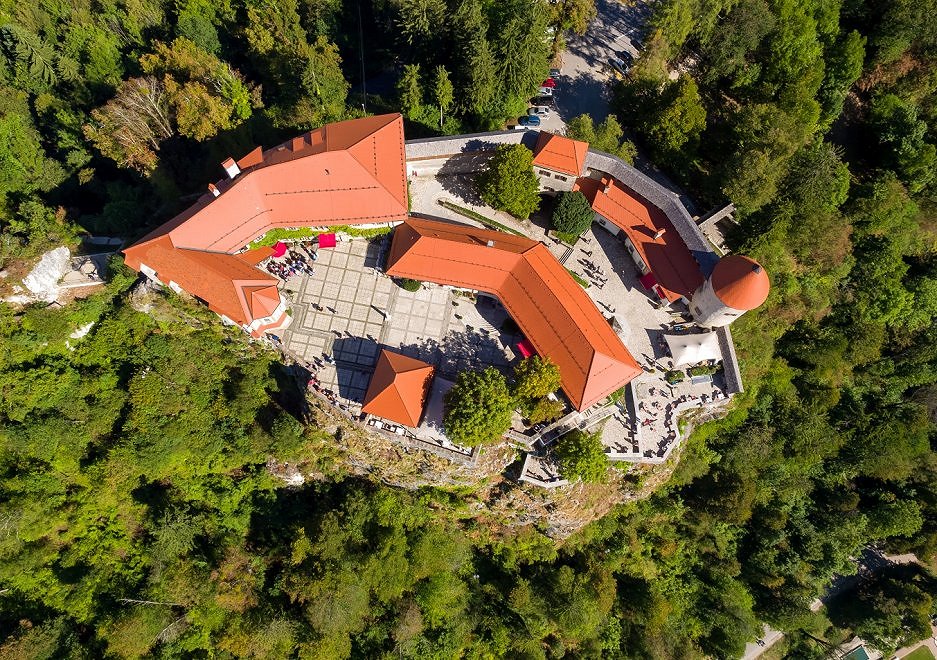 © Vizualist
© Vizualist
The Bled Castle offers the finest view of the Bled island, the town of Bled and of the wider countryside of the Gorenjska region.
The next morning, we were off to Bled Castle. When I was growing up, my parents took me to France for a number of holidays, and I loved visiting castles. I would run along the ramparts, pretending to shoot at invisible enemies through the arrow slits. I taught the girls my pantomime arrow-shooting technique and I’m delighted to report that they were into it (and remarkably good shots, we liked to imagine). The castle has a lot to offer, between the stunning views down to the lake, an old-fashioned printer’s shop where you can help to print and seal with wax a souvenir, a wine cellar and, of course, the fine museum. I figured I had my daughters stumped when we entered a room with the skeleton of what looked like a deer, and I asked them which animal they thought it was. “A moose, of course,” said my 6-year-old, despite the fact that she’d been taught by me that moose were indigenous to North America. Shows how much I know—turns out there were moose in ancient Europe, and she can spot a moose skeleton from across the room.
These activities really just scratched the surface of what you can do with children in Bled in the summertime. We tried to focus on what was unique to Bled, but there is also the sort of ubiquitous kid-fun activities, like mini golf and movies and swimming, in abundance.
We even spotted an ideal place to stay next time. At the Garden Village Bled you can stay in treehouses, and some of them are equipped with indoor trampolines… It’s probably for the best that we didn’t stay in one of those, as we’d never get the girls out of them to explore this marvelous lake, one of the most beautiful places on the planet, for adults in love (with or without children).
About author
Dr. Noah Charney is a best-selling American author and professor of art history, living for many years in Slovenia. He grew up in New Haven, in the USA, and did his postgraduate studies at The Courtauld Institute, University of Cambridge and University of Ljubljana. He is the author of 13 books, including several international best-sellers, including Slovenology: Living and Traveling in the World's Best Country, a book of essays about his adventures living in Slovenia, which he calls “the world’s best country,” which sold over 3000 copies in the first six months. HisEternal Architect: The Life and Art of Joze Plecnik, Modernist Mystic, came in second for the Slovenian Book Award and won Best Book at the Novi Sad Architecture Biennial. While he is a specialist in art history and art crime, he has become a specialist in Slovenia, writing about it frequently for major publications, like The Guardian and the Washington Post. Learn more about his work at noahcharney.com or join him on social media, where he reports on his adventures in "the world's best country".

